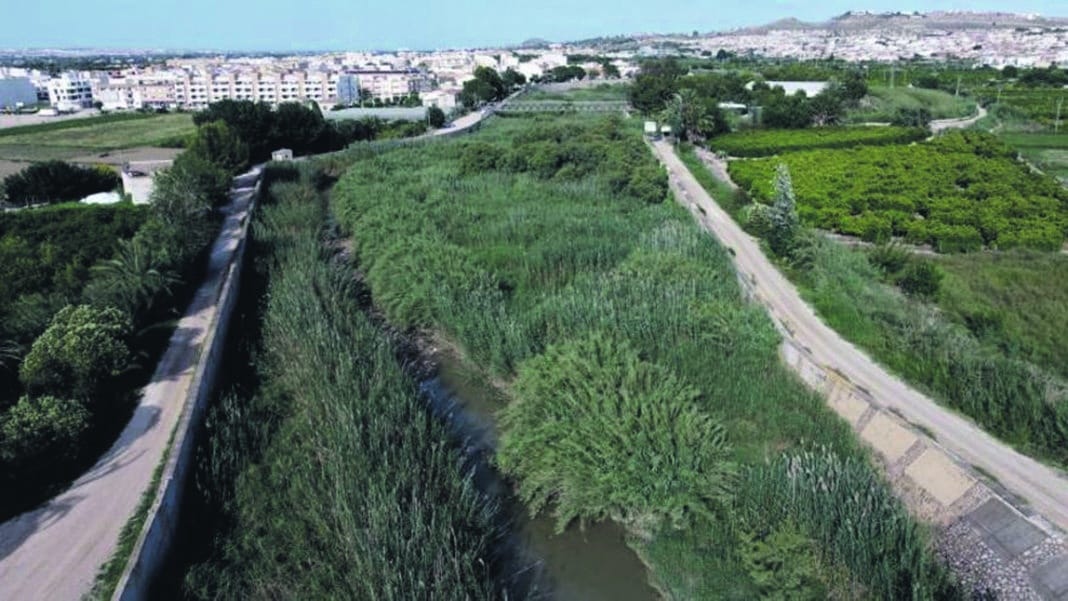I’m no expert but looking around the area at the amount of vegetation, reeds, cane and other such overgrown and invasive vegetation, that is currently occupying riverbeds, ravines and barrancas, I wonder if our politicians have learned any of the lessons that they were so harshly taught during the 2019 DANA, when catastrophic flooding completely destroyed villages, properties and traditional orchards, across much of the local area.
As La Vega Baja once again faces September with the uncertainty that a new DANA situation may occur in the coming days, the devastating episode of the Santa María flood in September 2019 still feels all too recent, the intensity of which, in some areas of Bajo Segura, was thought to occur only once in every 500 years, but somehow the concern persists.
The Rio Segura in the Vega Baja accumulates more than 6,000 m³ of floating waste every year and presently, most of its course, from the gates of Murcia in Las Norias to the mouth of Guardamar has not been cleared of the proliferation of invasive cane that would, first, reduce the speed of the flow of the river in the event of torrential rains, and then cause a blockage, or a dangerous accumulation of vegetation, around the bridges in urban sections, where the channel’s capacity is narrowed.
In September 2019, the channel in Almoradí collapsed, from where it released 20 cubic hectometres that flooded large areas of Dolores, Daya Vieja and San Fulgencio for long periods.
In recent weeks there have been warnings from the residents of Molins, which was under water for days, Formentera del Segura, where a dense mesh of vegetation barely allows a trickle of water at this time of year, and the Orihuela City Council itself, which is responsible for its own urban section, yet the same pattern of reeds more than four metres high can still be seen at the mouth.
On the Orihuela Costa, neither the CHS nor the Orihuela City Council have acted in any of the six riverbeds that flow into the Orihuela beaches. Invasive trees, weeds and urban waste clog many of the channels that have also been narrowing in the last thirty years due to pressures of urbanisation. No one acts while the debates about who should take charge seem to be no further forward.
The CHS says it has no responsibility when the riverbeds are urban, as it considers those to be on the Orihuela coast. Among them is the Rio Nacimiento, capable of adding up to 380 cubic metres per second at its mouth and which is covered by dense invasive cane vegetation in its final stretch, where it arrives at La Glea beach in Campoamor.
However, in recent months, the CHS has carried out an emergency dredging at the mouth of the old Segura riverbed, where clogging by sediments was one of the main causes of the continuation of the flooding of thousands of hectares of traditional orchards, between Guardamar, San Fulgencio and Dolores, in 2019.
Another of the actions they have carried out on the public domain land of the riverbeds has been the clearing of the Seco river, upstream of the motorway, in coordination with the Pilar de la Horadada Council, which has contracted maintenance work for 40,000 euros, to clear 1,700 linear metres of its riverbed up to its mouth at Mil Palmeras beach.
But despite the announcement of an investment of 600 million euros contemplated in the Cuenca plan, the CHS has made little progress with in-depth investments to reduce the impact of flooding in the region with political parties and farmers once again accusing them of using the Vega Baja as the sinkhole for the Region of Murcia.
Local communities can now only wait nervously to see whether measures adopted during the four intervening years will help to protect La Vega Baja against flooding from DANA, should it arrive.





